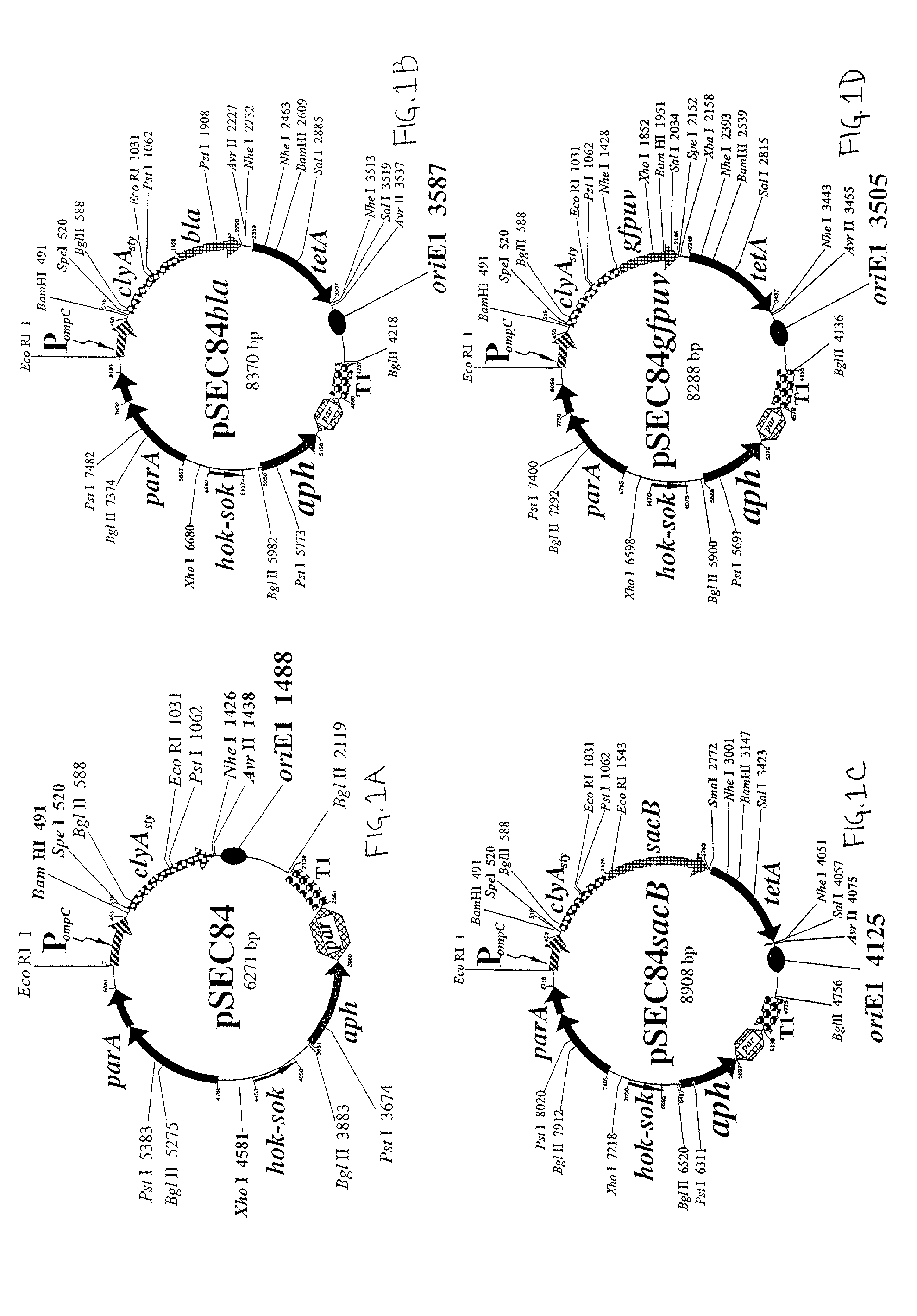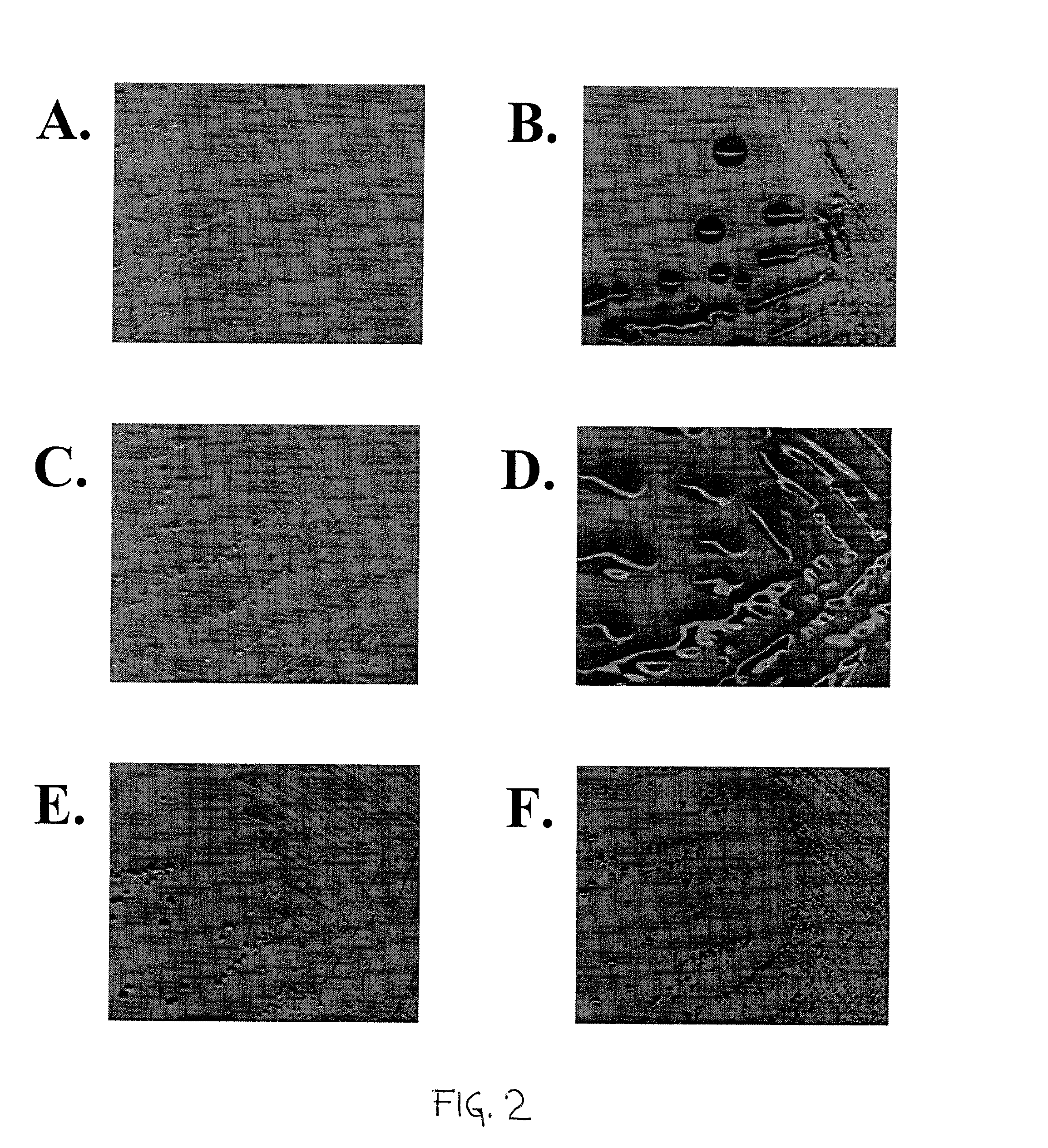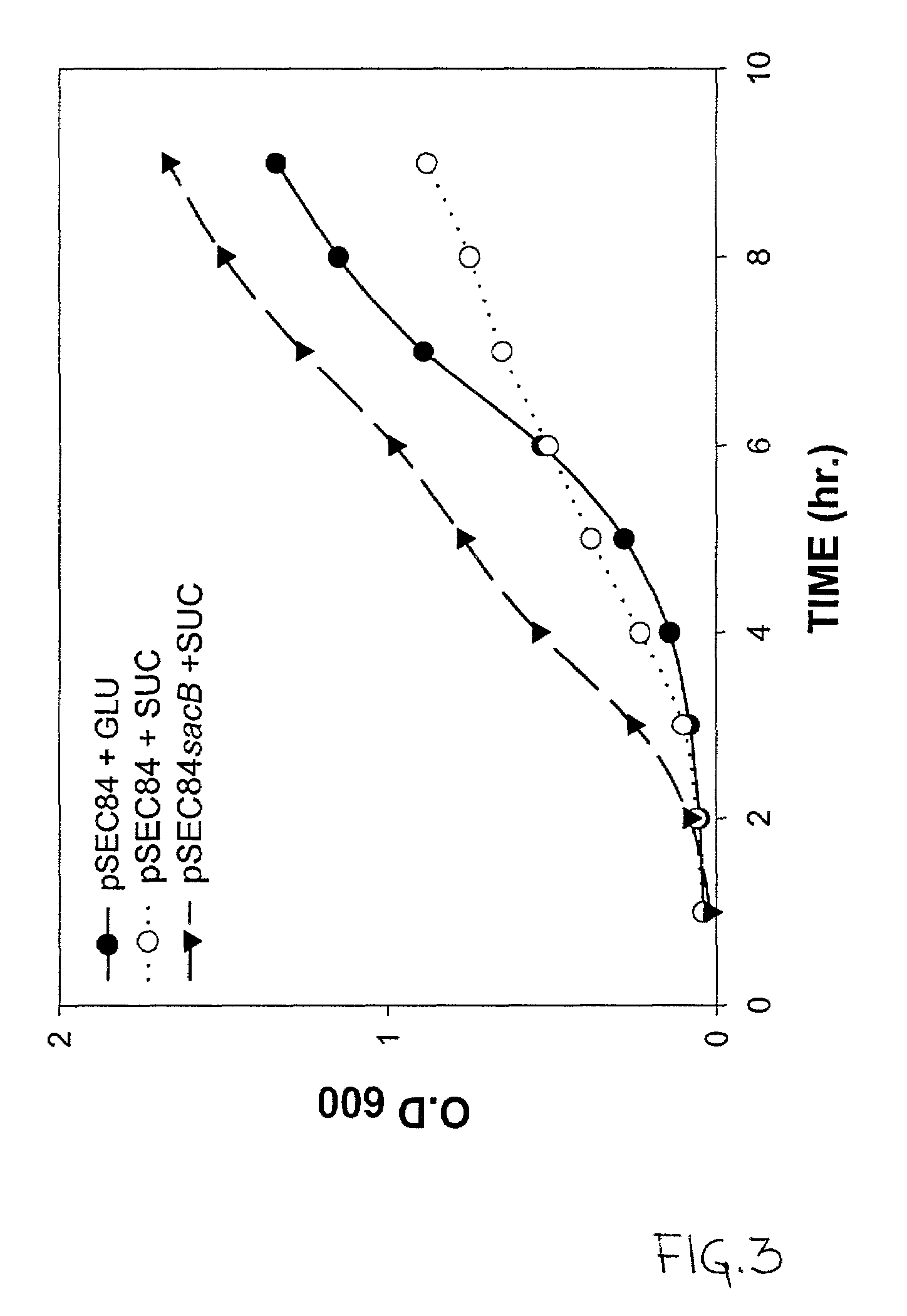Use of ClyA hemolysin for excretion of proteins
a technology of clya hemolysin and protein, applied in the field of protein export system, can solve problems such as reduced growth rate, and achieve the effect of facilitating the export of fusion proteins
- Summary
- Abstract
- Description
- Claims
- Application Information
AI Technical Summary
Benefits of technology
Problems solved by technology
Method used
Image
Examples
example 1
Cloning and Mutagenesis of S. Typhi clyA
[0088]Identification of clyA was accomplished by BLASTN analysis of the recently completed S. Typhi genome sequence available from the Sanger Centre (Wellcome Trust Genome Campus, Hinxton, Cambridge, CB10 1SA, UK) (See http: / / www.sanger.ac.uk / Projects / S typhi / blast server.shtml), using the DNA sequence from E. coli hlyE (GenBank accession number U57430).
[0089]The clyA open reading frame was identified as a 912 bp sequence predicted to encode a 304 residue protein with a molecular mass of 33.8 kDa that is 89.4% identical to E. coli HlyE. Although clyA is 85.3% identical to the 915 bp E. coli hlyE open reading frame, the upstream transcriptional control region is distantly related with only 33.6% identical bases within a 250 bp region.
[0090]Based on this analysis, primers were designed for PCR amplification of a promoterless genetic cassette encoding ClyA in which an optimized ribosome-binding site was engineered 5′-proximal to the ATG start cod...
example 2
Construction of Carboxyl-terminal Fusions of Test Antigens to ClyA
[0098]To test the ability to export passenger proteins fused at the carboxyl terminus of ClyA, the bla gene encoding the RTEM-1 β-lactamase protein which confers resistance to both ampicillin and carbenicillin, was chosen for experimentation.
[0099]This protein fusion was engineered as a genetic fusion of a Spel cassette inserted in-frame into the NheI site adjacent to the tandem stop codons at the clyA 3′-terminus of pSEC84. Initially, an 807 bp SpeI-NheI fragment encoding the mature 268 amino acid β-lactamase without the 23 residue signal sequence was synthesized from a pBR322 derivative by PCR. The purified fragment was then inserted in-frame into the engineered carboxyl terminal NheI site of clyA to create a 1742 bp clyA-bla genetic fusion encoding a predicted 62.9 kDa fusion protein. The desired plasmid construct was easily recovered in isolated colonies from cultures grown in the presence of 5 μg / ml carbenicillin...
example 3
Bioreactor Protein Expression of a ClyA-SacB Fusion
[0112]A bioreactor is prepared according to the teachings of U.S. Pat. No. 5,635,368, which is hereby incorporated by reference in its entirety. Briefly, granular derivatized cellulose is manufactured according to U.S. Pat. No. 4,355,117 as follows: 25 parts of fibrous cellulose is mixed with 25 parts of titanium dioxide and the mixture is compounded with 50 parts of high-impact polystyrene using a twin-screw extruder. The extrudate is cooled in water, and sieved to a particle size of 0.35–0.85 mm. The sieved granular agglomerated cellulose particles are derivatized to form DEAE cellulose as described in the U.S. Patent above.
[0113]Next, ten (10) grams of the granular DEAE-cellulose is reduced to a slurry in distilled water and soaked for 5 hours with occasional stirring. The hydrated carrier is then decanted with the distilled water and transferred into a glass column with an inner diameter of 15 mm where it forms a bed with a heig...
PUM
| Property | Measurement | Unit |
|---|---|---|
| mass | aaaaa | aaaaa |
| mass | aaaaa | aaaaa |
| mass | aaaaa | aaaaa |
Abstract
Description
Claims
Application Information
 Login to View More
Login to View More - R&D
- Intellectual Property
- Life Sciences
- Materials
- Tech Scout
- Unparalleled Data Quality
- Higher Quality Content
- 60% Fewer Hallucinations
Browse by: Latest US Patents, China's latest patents, Technical Efficacy Thesaurus, Application Domain, Technology Topic, Popular Technical Reports.
© 2025 PatSnap. All rights reserved.Legal|Privacy policy|Modern Slavery Act Transparency Statement|Sitemap|About US| Contact US: help@patsnap.com



